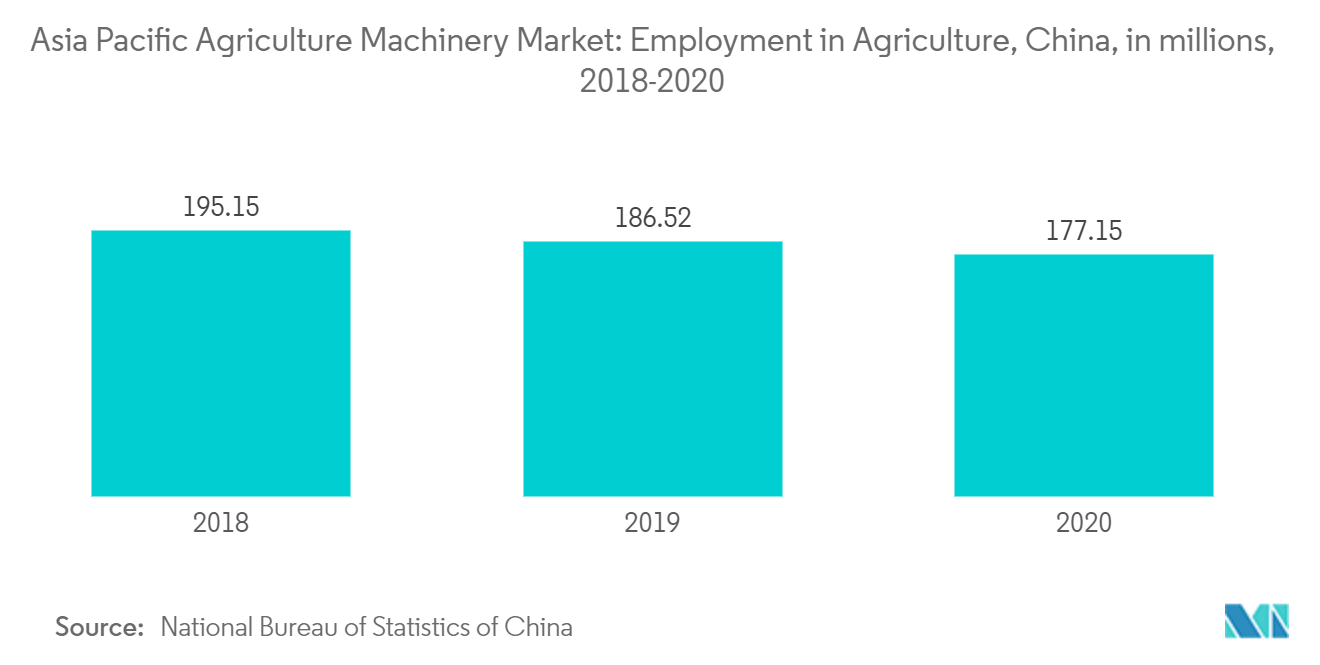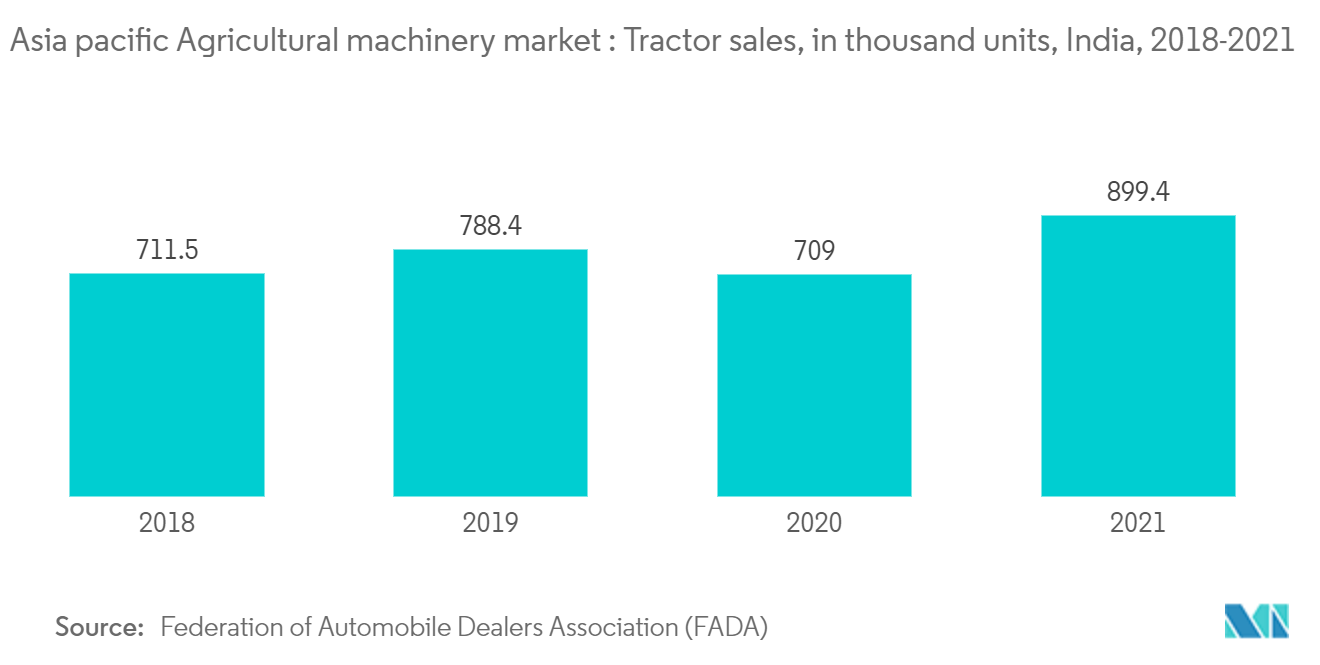Market Trends of Asia-Pacific Agricultural Machinery Industry
This section covers the major market trends shaping the APAC Agricultural Machinery Market according to our research experts:
Lack of Farm Labor and Increase in Farm Wages
The cost of farm labor is directly proportional to the cost of production. Hence, increasing labor wages and lack of farm labor are driving the agriculture machinery market in the Asia-Pacific region. For instance, the average rise in the daily farm wages noticed in India is USD 0.2 in the last few years. This trend is anticipated to continue further as farm labor is decreasing because of the migration of rural people to urban regions.
Moreover, a higher proportion of the population depends on agriculture on average in developing nations like China. Since many individuals move to urban regions every year, the percentage has dropped with time. For example, every year 0.5 to 1% decline is noticed in farm labor availability in China. Additionally, the Statistics from the Chinese government show that the percentage of people employed in agriculture fell from 36.7% in 2010 to 23.6% in 2020. The cost of farm labor is becoming more expensive as a result of the decline in agricultural labor. Similar to how inadequate rural reforms result in a reduction in rural labor, farmers are increasingly mechanizing their numerous farm operations. This is one of the major driving factors of agricultural machinery.

India and China Dominates the Market
India and China account for 60% of farm machinery share in the Asia-Pacific region. The demand for farm mechanization in India and China has continuously increased significantly. The prime market drivers are the lack of labor, the need to increase farm productivity, contract farming, and government incentives. A high labor wage is also a key factor in the market. Tractors occupy the major part of the market share among all the farm machinery in this region. Agriculture equipment sales dominated the Indian market in 2020, accounting for 810,000 units sold. China was the second largest market, accounting for 610,000 sales.
Along with this, the Indian government provides incentives in the form of subsidies, cheap import levies on agricultural machinery, and simple financing schemes, which push the farmers to make their farms mechanized. Farm mechanization has become more common among farmers due to labor scarcity. There is a labor shortage in rural areas due to widespread migration from rural to urban areas and several rural employment programs. For instance, the National Rural Employment Guarantee Agency (NREGA) caused a cascade effect that resulted in farm mechanization in several locations due to a lack of labor.
Moreover, the support from the Chinese government is increasing farm mechanization for various crops, such as rice, wheat, corn, potato, oilseed rape, cotton, and sugarcane. The Chinese Ministry of Finance awarded more than CNY 20 billion in central government subsidies to acquire agricultural machinery in 2020. The country intends to achieve 75% full mechanization of agriculture, plowing, planting, and harvesting by 2025. Additionally, China has launched the Made in China 2025 initiative, which seeks to produce 90% of the country's agricultural equipment with high-end machineries, such as agricultural tractors, which accounted for one-third of the market sector in 2020. This, in turn, stimulates locally built tractors and propels the agricultural tractor market in the country.

